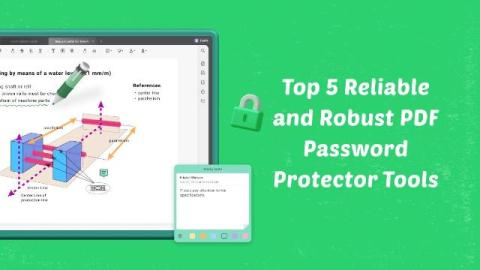Top 5 PDF Password Protectors to Keep Your Files Safe
As we know, PDF is the most used file format in professional and educational settings. Even sensitive data, like bank statements, are usually shared in a PDF format. Before sending these sensitive files over to the recipient, it is essential to ensure their safety to protect confidential data. By applying a password, you can safeguard your files from data breaches. Therefore, it is a good idea to password-protect your PDF files using a trustworthy protection tool. Read this article till the end, as it features a list of renowned PDF Password Protectors to help you pick a suitable tool.











